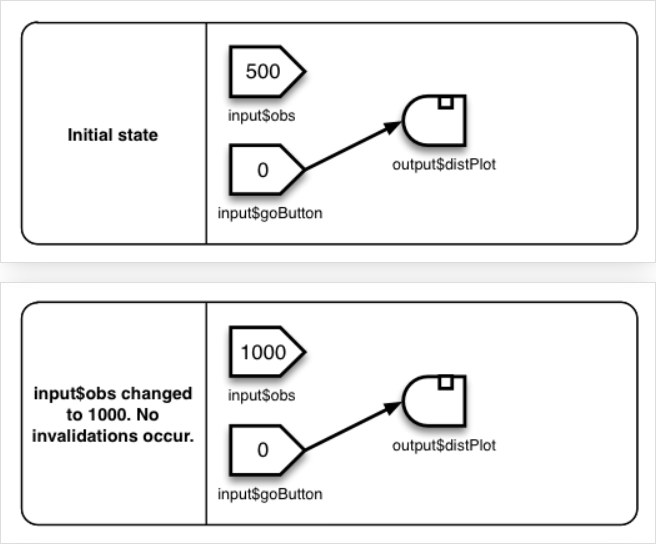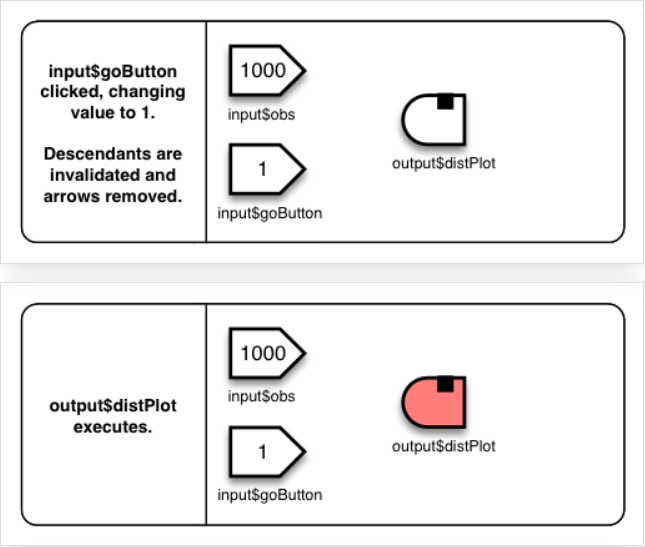Stop reactions with isolate()
有时observer/endpoint访问响应式值或表达式很有用,但不应依赖于此。 例如,如果observer执行耗时的计算或下载大量数据集,则可能希望其仅在单击按钮时才执行。
为此,我们将使用actionButton。我们将定义一个用户界面,该界面可让用户选择要从正态分布中生成的观察值的数量,并具有一个标有“Go!”的actionButton。您可以在这里看到它的实际效果。
actionButton包含一些JavaScript代码,可以将数字发送到服务器的。当Web浏览器首次连接时,它发送的值为0,并且在每次单击时发送的值都是递增的:1、2、3,依此类推。
ui <- pageWithSidebar(
headerPanel("Click the button"),
sidebarPanel(
sliderInput("obs", "Number of observations:",
min = 0, max = 1000, value = 500),
actionButton("goButton", "Go!")
),
mainPanel(
plotOutput("distPlot")
)
)
在我们的server函数中,有两点需要注意。首先,仅通过访问output$distPlot即可获取对input$goButton的依赖。单击该按钮时,input$goButton的值增加,因此output$distPlot重新执行。
第二个是,对input$obs的访问用isolate()包装。此函数采用R表达式,并告诉Shiny调用方observer或响应式表达式不应依赖于表达式内的任何响应式对象。
server <- function(input, output) {
output$distPlot <- renderPlot({
# Take a dependency on input$goButton
input$goButton
# Use isolate() to avoid dependency on input$obs
dist <- isolate(rnorm(input$obs))
hist(dist)
})
}
结果图如下所示:
下面是通过输入$obs为1000,然后单击“Go!”按钮时的过程的逐步介绍:


来源:CSDN
作者:your sugar
链接:https://blog.csdn.net/qq_37430374/article/details/103721543